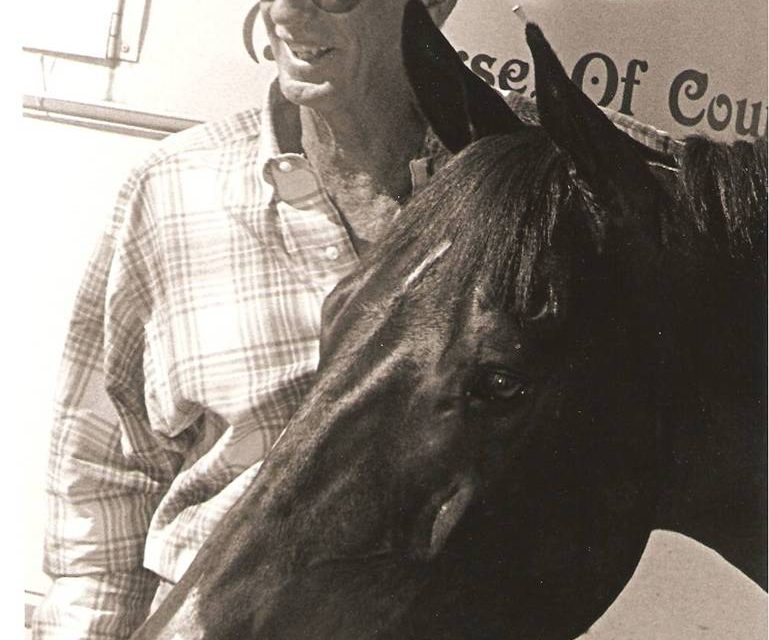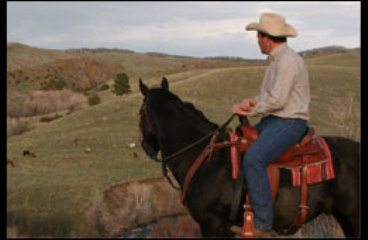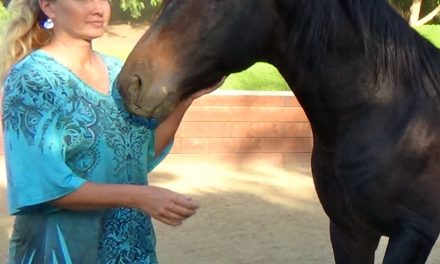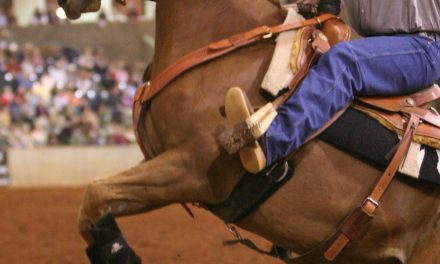A Horse, Of Course

Don and Walter
Why is it these days that whenever a clinician tells a rider, “the most important way of communicating is….” – he or she always has a communication device to sell?
Or “the most important means of communication is” some kind of training system the clinician is promoting.
As a rider you are never going to need to buy “the most important communication device.”
You’ve already got it.
It’s your weight.
Your weight is the most important means of communication with your horse because it is always there.
Your horse is constantly being influenced by your weight.
Unlike the reins, you can’t let go of it.
Unlike a bit, you can’t make it milder or stronger.
Unlike your legs, you can’t remove it.
You can’t tell your horse to ignore your weight. That’s impossible for him to do.
Put it here, put it there, your weight is telling your horse something, and you had best hope it is the correct thing.
And if you understand that your weight is the most important communication device, you will quickly recognize that your weight can easily influence the horse’s entire body. Moved backward, your weight affects the hindquarters. Centered your weight controls the central portion of the horse’s body. Moved forward, your weight affects the forehand.
Your legs essentially control motion and direction, and can influence flexion, but don’t do much for the entire body.
The reins and bit should tell the horse the frame in which you want your horse to maintain his body.
The reins can also communicate direction. Beyond that, the reins and bit do little. Unfortunately the reins and bit are frequently misused as pain inflictors to get the horse to break at the poll, or lower his head position.
The first element of training is communication, and that element is most affected by your weight.
The second element of training is the understanding that all your horse’s action is initiated in the hindquarters. And that element too is very much affected by your weight.
If you want your horse to move forward at the walk, you will begin your communication by telling the horse through the reins to frame himself with his body in its longest position. You will then ask with your weight and legs to have the horse’s hindquarters move the horse’s mass forward. The muscles of the hindquarters extend in response to the rider’s legs and weight, causing the horse to lose his equilibrium forward. The horse steps forward with a foreleg to catch the moving mass and rebalance. The horse is walking.
Now if the rider’s weight is maintained in the center of the horse, the horse can walk a relatively straight line. If the rider shifts his weight to the right, for example, the horse is going to move to his right to rebalance the rider’s weight. The horse will begin the correction even before the rider gives any kind of rein cue signaling a change of direction.
Move your weight forward and the horse will flatten and at the same time lengthen his stride.
Move your weight to the hindquarters and discontinue all leg pressure and your horse will slow forward movement.
To get the horse to break at the poll, the rider needs only to set a bit barrier by gently shortening the reins.
With the barrier established, the rider then uses his or her legs to squeeze the horse forward. The hindquarters move forward, the back rounds up and the horse breaks at the poll as a natural movement to remain in frame.





